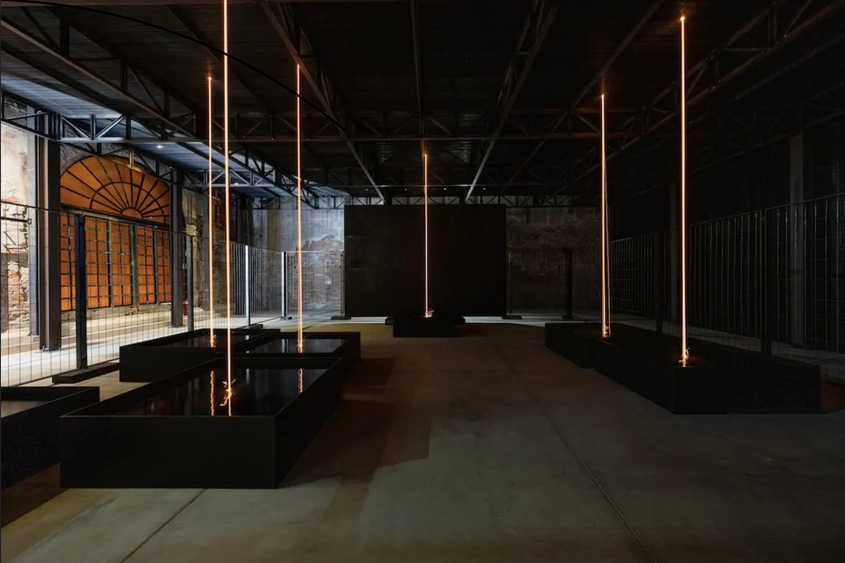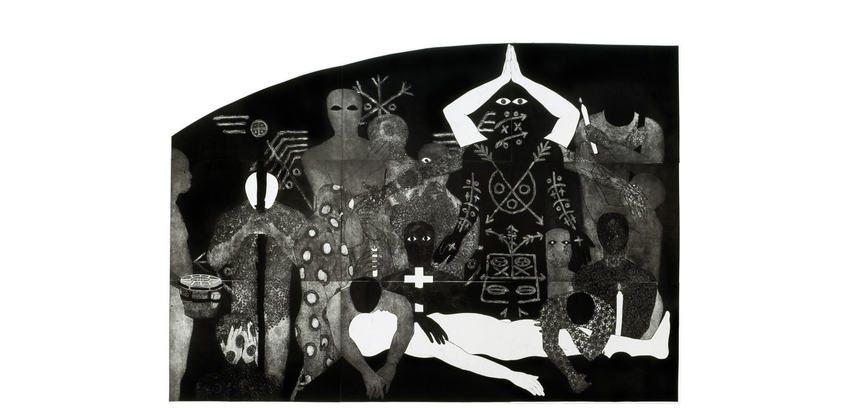Why is it so special ?
The 59th edition of the Venice Biennale opens up on a note of exceptionality : for the first time since World War II, the event, formerly scheduled for 2021, was postponed to 2022. This extra time gave birth to The milk of Dreams, an exhibition inspired by the homonymous book by Leonora Carrington. Thus, the biennale takes us on an imaginary journey through the representation of bodies and their metamorphoses, the relationship between individuals and technologies and the bonds intertwined between bodies and the Earth. In this edition, « artists propose new alliances between species, and worlds inhabited by porous, hybrid, manifold beings that are not unlike Carrington’s extraordinary creatures » explained Cecila Alemani, the biennale curator.

Another particularity of this edition lies in the selection of the artists: more than 80% of them are women or non-binary. While this choice shouldn’t actually surprise anyone, as it is the mere reflection of the contemporary art world (about 75% of art students at university level are women), it is still exceptional for a major international art institution such as the biennale to reflect this trend. Historically, about 10% of artists in the main exhibition have tended to be women, rising to 30% in recent years. It’s only in 2019, with curator Ralph Rugoff, that the exhibition achieved a rough parity for the first time. Beyond a more equal representation, this selection enables us to hear different voices, listen to different stories and have access to a broader diversity of the inner and the outer world of those artists.

Finally, an increased attention is given to the environmental sustainability of the event. The goal of the organization is to extent the achievement of “carbon neutrality” certification, obtained in 2021 for the 78th Venice International Film Festival. While carbon neutrality of the overall event can seem rather ambitious (with all the art enthusiasts flying in the same place from all aver the world, art biennials are often carbon catastrophes!), it is crucial that sustainability has become a major preoccupation, and that the whole art world evolves towards more sustainable practices. This is important not only for the environment, but also in a coherence logics, since many contemporary artists are addressing the threat of ecological disasters in their practices. Noteworthy is also the growing involvement of figures such as sustainability advisors, like Susanna Sieff (also Head of Sustainability of the next winter Olympic Games) appointed by Malta Pavilion with the aim of mapping and reducing the CO2 emissions generated by the production process of Diplomazija astuta, Arcangelo Sassolino’s last kinetic installation.

What you shouldn’t miss ?
Here is a selection of three artists that deserve a closer look at the 59th edition of the Venice Biennale :
Christina Quarles

Quarles through her playfulness splashed all over the canvas, the fluidity of her brush and the diversity of the textures she created, proves us that painting can still be a vivid and fertile
playground.
Belkis Ayòn

The strength of Ayòn works has no boundaries. Even though the Cuban artist major theme is rather local (her iconography is based on the Abakuán mythology, a secret Afro-Cuban fraternal society), her works touch upon universal themes such as grief, pain and untold social rules. The deepness of her works are reinforced by the collography technique used by the artist, enabling the appearance of unusual textures and various grey shades.
Myrlande Constant

The mesmerizing effects of Myrlande Constant artworks can’t be approached on a screen. One of their biggest strengths lies on the visual effect provoked by the sequins of Constant's elaborate
embroideries while we move across the exhibition room. Here you can still have a glimpse of those vibrant Voodoo fllags that the Haitian textile artist realizes, infused by her pluralistic
spiritual instruction (her father is a organ - Vodou priest - and a Cristian ).
As regards the national pavilions, must seen exhibitions are :
- Paradise Camp, the New Zealand pavilion by Yuki Kihara curated by Professor Natalie King for its intersectional vision, merging colonial stories, gender politics and environmental questions issues.
- History of Night and Destiny of Comets by Gian Maria Tosatti curated by Eugenio Viola at Italian Pavilion for its ability to trigger narratives and building up tension within the visitor’s mind.
- The Nature of the Game, Belgian pavilion by Francis Alÿs curated by Hilde Teerlinck, for bringing some softness and lightness within a realm dominated by apocalyptic scenarios and post-human theories.
All the conceptualism lovers should definitely visit Relocating a Structure at Germany Pavilion by Maria Eichhorn curated by Yilmaz Dziewior, that takes deconstructivism literally (I would be curious to see the fate of the pavilion once the the biennale will be over); Correction at Spain Pavilion by Ignasi Aballí curated by Beatriz Espejo, and There You Are at Bulgaria pavilion Michail Michailov curated by Irina Batkova, both apparently empty but full of surprises.
Finally, and as always, the most spectacular show at the Venice biennale is the city itself, its ability to amaze and disorient its visitor at the same time, its omnipresent lagoon, offering a tight contact with water element at every corner, the charming accent of Venetians and their sympathy despite mass tourism. Coming back in this city and living intensely this full experience of art discoveries and rich encounters after a three-year break, full of digital events, zoom meetings and online exhibitions proves that the physical location counts, face-to-face meetings matters, and that reality remains irreplaceable, an't please to Metaverse architects and NFT hunters.


Write a comment